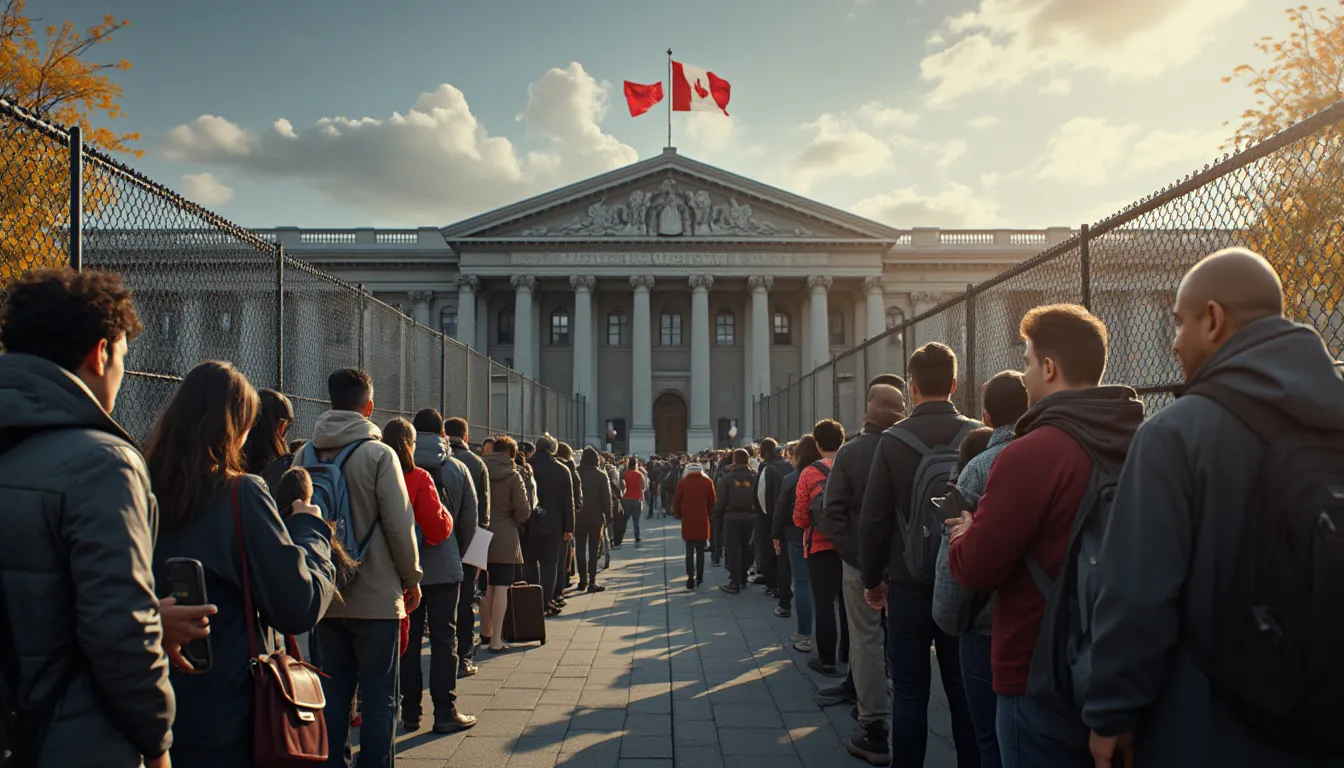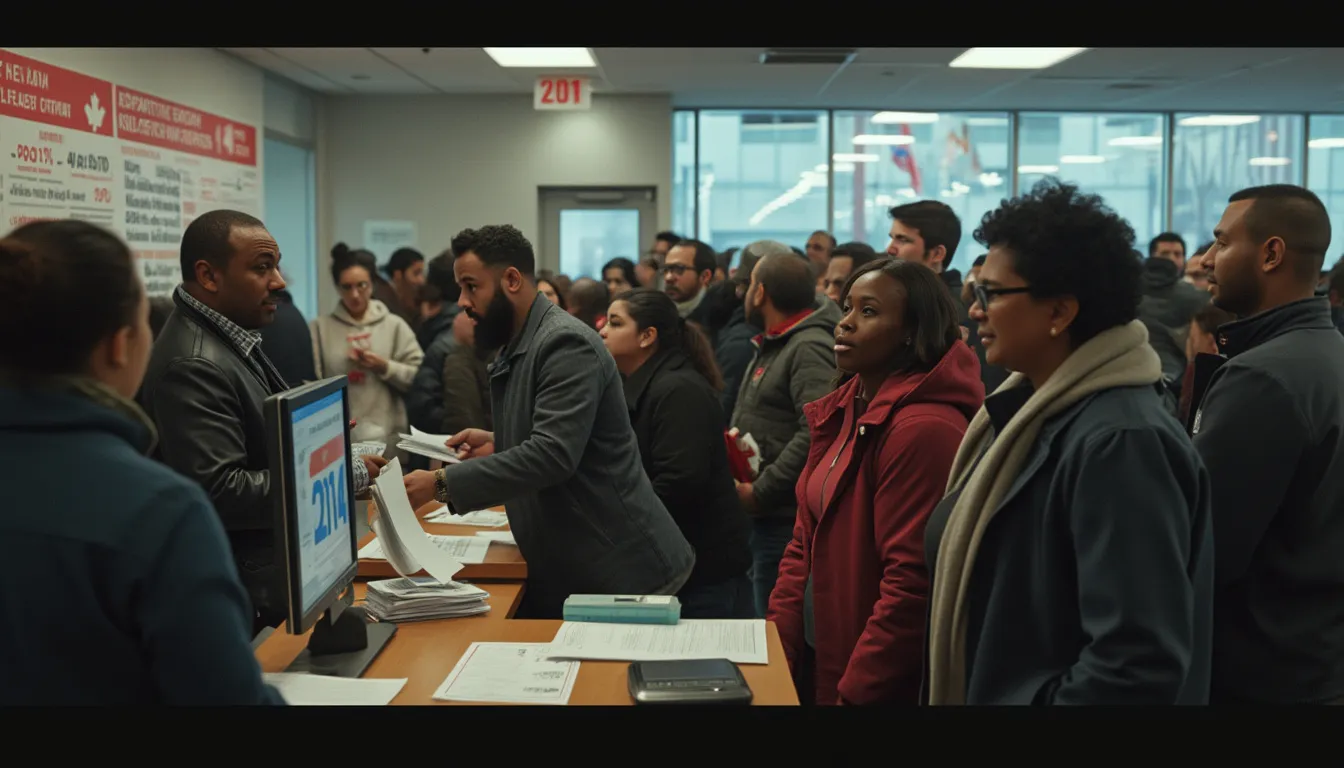Table of Contents
Canada Denied Over 2.36 Million Temporary Visas in 2024 Amid Stricter Immigration Rules
Introduction
In 2024, Canada denied more than 2.36 million applications for temporary visas, marking one of the highest refusal rates in recent years. The surge in denials follows a series of policy changes aimed at tightening immigration controls. These changes have affected students, workers, and families seeking to enter the country.
Background: Immigration Trends in Canada
Temporary immigration has been a defining feature of Canada’s economic and social policy. Over the past decade, the number of international students, temporary workers, and visitors has risen sharply. In recent years, however, the federal government has introduced stricter admission requirements, citing pressures on housing, public services, and system integrity.
Compared to prior years, 2024 stands out for the scale of refusals. Officials emphasize that the new policies are intended to ensure that only applicants who meet financial, educational, and security thresholds are admitted.

Categories of Affected Applicants
International Students faced higher financial proof requirements and capped admissions to limit enrolment growth. Many institutions report declines in applications and acceptances.
Temporary Foreign Workers experienced increased scrutiny, particularly in sectors where domestic workers are available. Employers note challenges in filling seasonal and specialized roles.
Tourists and Visitors encountered stricter admissibility checks. Authorities stress that these measures are necessary to prevent misuse of visitor visas.
Family Reunification Applicants were also affected. While visitor visas are not permanent pathways, many family members seeking to visit relatives in Canada experienced longer processing times and higher denial rates.

Government’s Justifications for Stricter Rules
Federal officials outlined several reasons for the policy shift:
- To relieve pressure on housing and healthcare systems.
- To prevent the misuse of temporary visas as a backdoor to permanent residency.
- To safeguard against fraud and maintain the credibility of Canada’s immigration program.
- To balance labour market needs with public concerns about immigration levels.
Each justification has been communicated through government releases, underscoring transparency in decision-making.
Reactions and Criticisms
Universities and colleges have raised concerns about reduced international enrolment, which could affect both finances and campus diversity.
Business groups caution that certain industries, such as agriculture and hospitality, may face worker shortages.
Immigrant advocacy organizations argue that the rules disproportionately affect applicants from certain countries and lack clear appeal mechanisms.
Public opinion remains divided. While some Canadians support stricter controls, others emphasize the economic and cultural benefits of temporary residents.
Global and Domestic Implications
Canada’s approach reflects a global trend toward stricter immigration regimes. Comparisons with countries such as Australia and the United Kingdom highlight similar debates about balancing labour needs with housing and public infrastructure challenges.
Domestically, economists warn of long-term effects, including slowed population growth and reduced international competitiveness in education and labour markets. Internationally, refusal rates could influence Canada’s diplomatic relationships with countries experiencing higher denial patterns.
Case Studies and Human Impact
Several applicants reported significant consequences following refusals. A student admitted to a Canadian university was unable to attend due to financial proof requirements. Seasonal employers in rural communities described difficulties in hiring foreign workers.
These individual cases illustrate the practical impact of policy shifts, beyond statistics.
Conclusion
Canada’s denial of 2.36 million temporary visas in 2024 represents a turning point in immigration policy. The government frames the decision as necessary for sustainability, while critics argue that it may undermine economic and cultural objectives.
The balance between system integrity and openness will remain central to policy debates in 2025 and beyond.
FAQs
Q1: How many temporary visa applications were denied in 2024?
A: Over 2.36 million applications were refused by Immigration, Refugees and Citizenship Canada (IRCC) in 2024.
Q2: What types of visas were affected?
A: The refusals affected a range of visas, including:
- Study permits for international students.
- Work permits for temporary foreign workers.
- Visitor visas for tourists and family members.
Q3: Why did Canada tighten immigration rules?
A: The federal government stated that the changes were designed to:
- Reduce pressure on housing and public services.
- Ensure applicants meet stricter financial and admissibility requirements.
- Protect against fraud and misuse of temporary visas.
Q4: How do these changes affect international students?
A: Students now face higher financial proof requirements and an intake cap set by the federal government. This has reduced approval rates and affected enrolment at Canadian universities and colleges.
Q5: What about temporary foreign workers?
A: Employers seeking to hire temporary foreign workers must meet stricter conditions. Applications are subject to closer scrutiny, especially in sectors where domestic workers are available.
Q6: Are tourists and visitors also impacted?
A: Yes. Visitor visa applications face more stringent admissibility checks, resulting in higher refusal rates compared to previous years.
Q7: How does this compare to previous years?
A: While Canada has always refused some applications, the 2024 refusal figure of 2.36 million is significantly higher than recent historical averages, reflecting policy changes.
Q8: How have institutions and employers responded?
A:
- Universities and Colleges: Report financial challenges and reduced diversity due to lower international enrolment.
- Employers: Express concern about filling seasonal and specialized jobs.
- Advocacy groups: Criticize the policies as disproportionately affecting applicants from certain regions.
Q9: Does a refusal mean someone can never reapply?
A: No. Applicants who were refused may reapply if they meet the requirements. IRCC assesses each application independently.
Q10: What is expected in 2025?
A: Immigration policy is under review. The federal government has signaled that it may continue to limit certain visa categories, but adjustments may be made based on housing capacity, labour needs, and public feedback.





No comment